Is the Renault 4 – either the 1961-1992 original or this modern electric recreation – a hatchback or an SUV? It’s not immediately obvious, is it?
The original Renault 4 is reckoned to be the first truly popular hatchback. Not only did it rack up more than eight million sales, but it’s also the fourth best selling car of all time, and the best-selling Renault ever.
Nonetheless, some claim that, thanks to its long-travel suspension, boxy body and its proven ability to tackle rough terrain the Renault 4 was the original, uncrowned SUV.
For its modern-day reinvention, the all-electric Renault 4 E-Tech is somewhere in the same ballpark.
The chunky styling, copious amounts of bash-proof black plastic trim, and the upright stance seem to indicate that it’s an SUV (it’s the same height as the Renault Captur, but has more ground clearance), but the proportions and general character make it more of a hatchback.
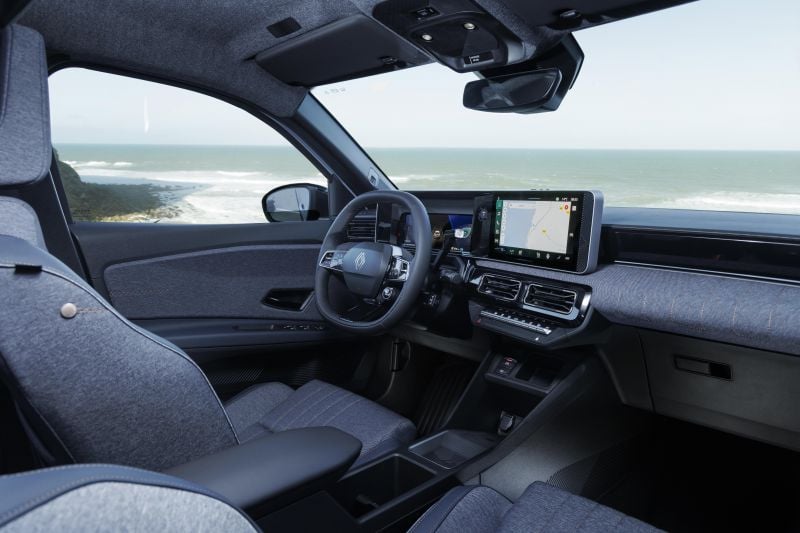
It has the same relationship to the Renault 5 E-Tech as the Captur has to the Clio: same bits underneath, but taller and roomier within.
There’s no confirmation yet whether the Renault 4 E-Tech electric will come to Australia, but should you be banging down the door of your local dealer, insisting you get a chance to buy one? Read on to find out.
How much does the Renault 4 E-Tech cost?
In European terms, the Renault 4 E-Tech will start comfortably under the €30,000 mark — that’s the equivalent of A$52,000 or less.
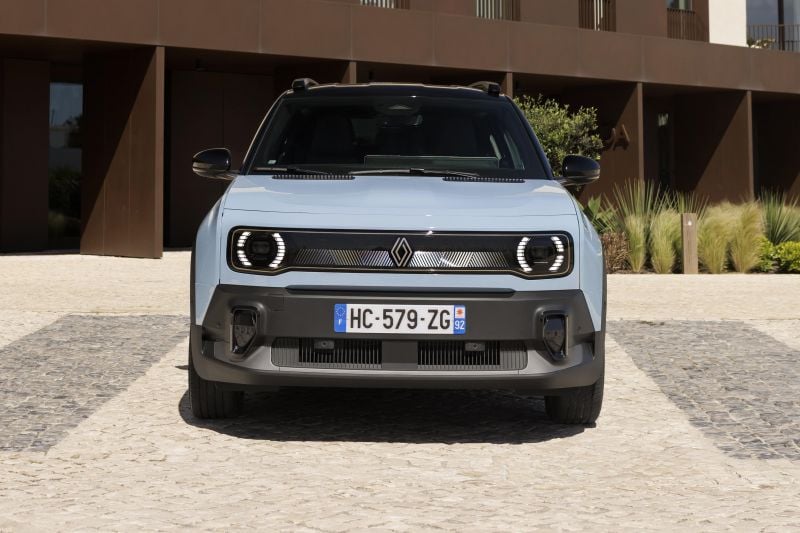
With the Megane E-Tech hatchback currently starting at a price of $54,990 before on-road costs, that would be in the right ballpark for a Renault 4 here.
Nothing is confirmed yet, but Renault Australia is known to be keen to bring both the R4 and R5 here at some point. It’s likely that’s at least a year away though, as Renault is already scrambling to fulfil orders in Europe for the R5.
If the R4 does make a return to these shores, it will be something of a homecoming, as the original Renault 4 was built in Renault Australia’s factory in Heidelberg, Victoria from 1962 to 1966.
What is the Renault 4 E-Tech like on the inside?
The Renault 4 E-Tech’s interior is very much that of the Renault 5, but slightly larger and taller.
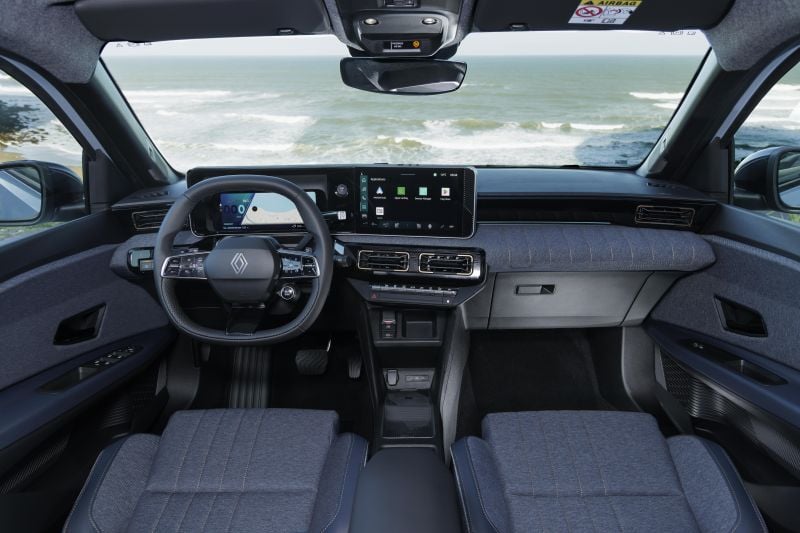
It uses the same digital instrument cluster (7.0-inch for base models, 10.0-inch for higher-spec versions) and the same 10.0-inch infotainment touchscreen, running the impressive Google-based software.
Thankfully that screen is backed up by some proper physical buttons for the climate control functions, which makes life much easier but you can have too much of a good thing – the profusion of column stalks to the right of the steering wheel to control drive modes, wipers and audio – takes a bit of getting used to.
However, the R4 is much roomier than the R5. In the front, there’s not much to choose between the two save for a touch more headroom, but in the back there’s a great deal more usable space.
Tall adults will struggle to even fit in the back of the R5, let alone get comfortable, but they will fit in the back of the R4, although you’d still struggle to call it properly spacious. It’s more adequately practical.
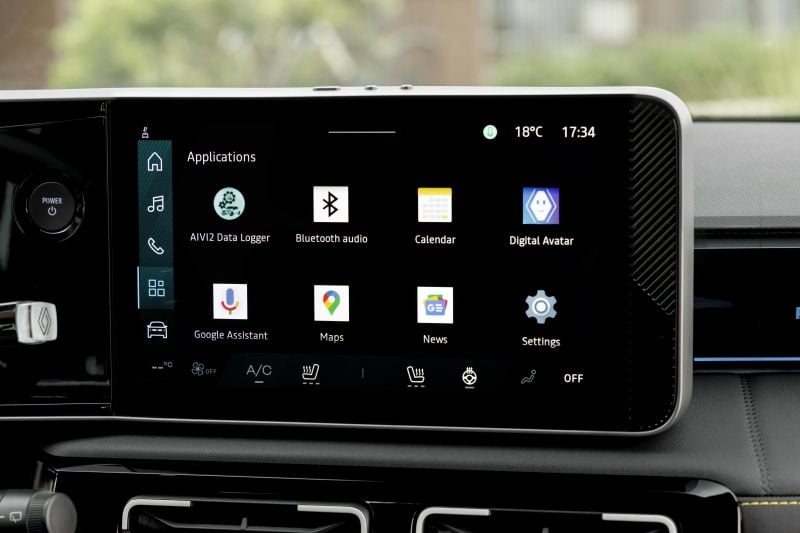
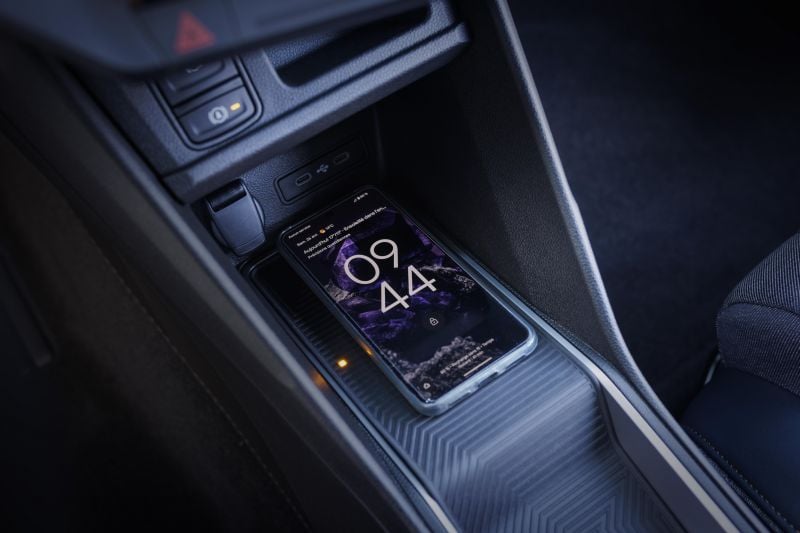
Boot space is quite impressive, however, and at 420 litres up to the luggage cover, there’s slightly more space on offer than you’d find in most direct competitors.
Better still, the load sill is very low – a nod to both practicality and to the low sill of the original Renault 4 – and it means that not only will loading up be less of a strain on your back, the boot also makes a nice place to sit, perhaps for a picnic.
There’s a bonus 55-litre space under the floor, which is designed for charging cable storage, and the lid for that is divided in two, which in theory makes it easier to get into if you’ve got a boot full of luggage or shopping.
The lining of that underfloor storage also lifts out so it can be cleaned or used as a handy container. There’s a pair of stretchy elastic straps (complete with French tricolours) at each side of the boot, for holding taller items in place, and the usual hooks and tie-downs.
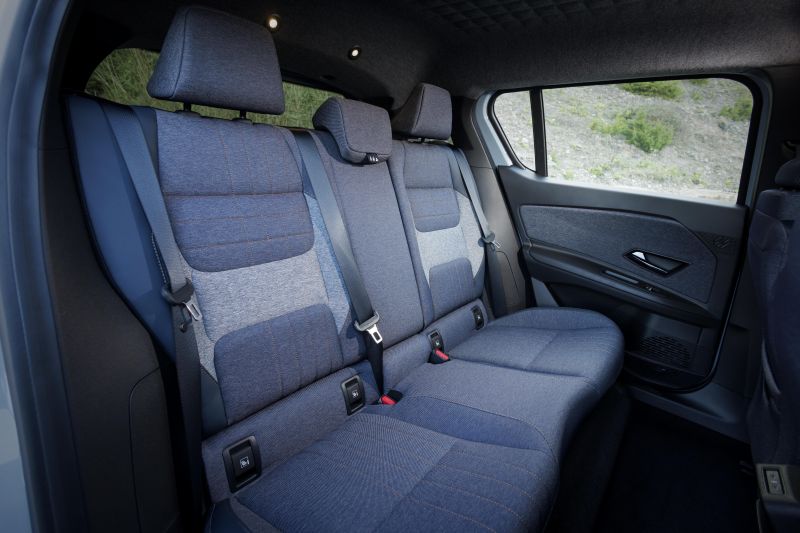
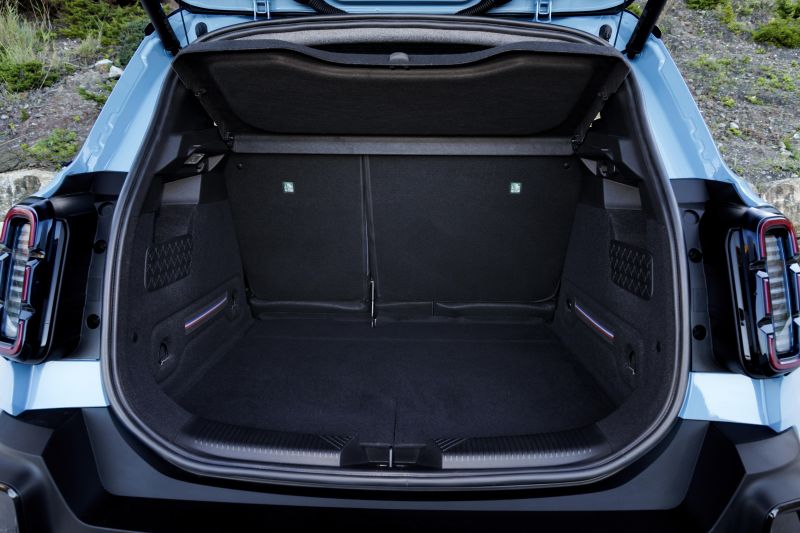
| Dimensions | Renault 4 E-Tech |
|---|---|
| Length | 4144mm |
| Width | 2020mm (including mirrors) |
| Height | 1572mm |
| Wheelbase | 2624mm |
| Cargo capacity | 420L (rear seats up) 880L (rear seats folded) |
What’s under the bonnet?
There is an entry-level Renault 4 E-Tech with a small 40kWh battery and a 90kW electric motor, giving it a theoretical range of up to 308km, but that’s a car we’ve yet to test. Our drive in Portugal included only the ‘Comfort Range’ model, with the 52kWh battery, a 110kW electric motor (driving the front wheels, of course) and a potential range of up to 409km.
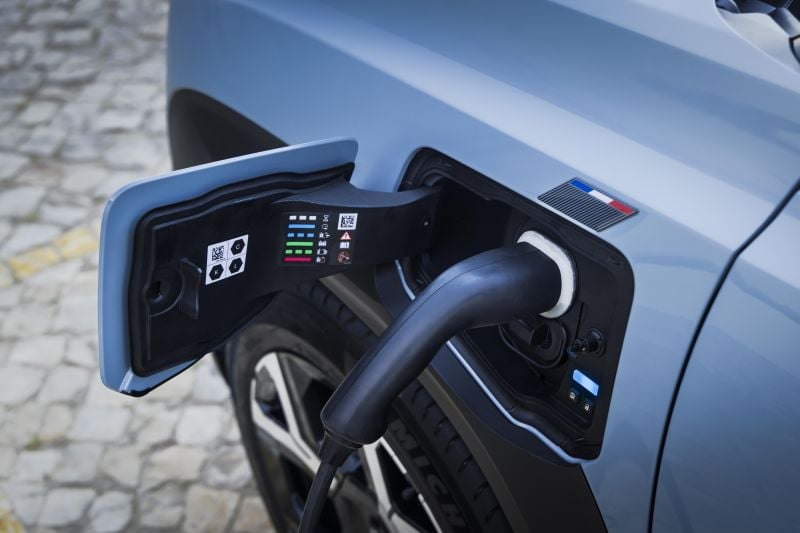
| Specifications | Renault 4 E-Tech |
|---|---|
| Drivetrain | Single-motor electric |
| Battery | 52kWh lithium-ion |
| Power | 110kW |
| Torque | 245Nm |
| Drive type | Front-wheel drive |
| Weight | 1462kg |
| 0-100km/h (claimed) | 8.3 seconds |
| Energy consumption (claimed) | 15.1kWh/100km |
| Energy consumption (as tested) | 14.9kWh/100km |
| Claimed range | 409km |
| Max AC charge rate | 11kW |
| Max DC charge rate | 100kW |
That official number turns out to be fairly realistic. Over a full day’s driving, taking in highway, city streets and winding country roads, we managed to average slightly better efficiency than Renault’s claim (we scored 14.9kWh/100km overall, compared to the official 15.1kWh/100km WLTP figure) which suggests that, in mixed driving at least, that 400km is achievable.
As with any electric car, long journeys on fast highways will deplete the charge a bit faster, and at the 120km/h permissible on some Portuguese roads, the useable range falls to more like 220-250km. Overall then, we reckon that around 360km is a safe, real-world bet between charges.
There’s also a handy vehicle-to-load function, which allows you to plug other electric devices into the R4, using an adaptor.
Performance from the 110kW motor is perfectly fine. The Renault 4 is notably light for an EV, tipping the scales at a reasonable 1462kg, so that motor, and its 245Nm of torque, is plenty. The 8.3-second 0-100km/h time doesn’t look all that impressive on paper, but on the road the R4 feels brisk enough for most purposes.
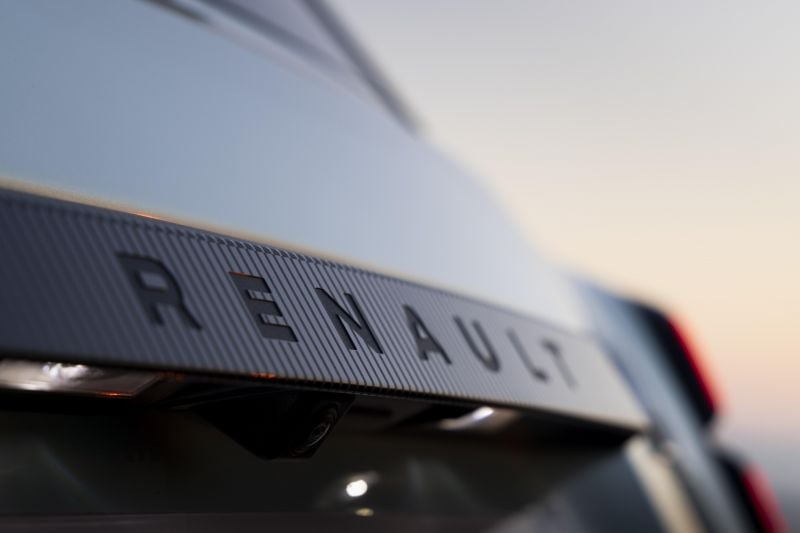
There’s a detente at the bottom of the accelerator pedal’s travel, which when pushed through gives you access to a quick burst of maximum performance for overtaking, which is welcome.
Just remember that switching into Eco mode in the ‘Multi Sense’ driving modes reduces the power coming from the motor and so restricts your speed on faster roads. There’s also little point in activating Sport mode.
There is one-pedal braking for low-speed driving around town, something you can’t yet have on the
R5, but to be honest the R4’s brake pedal feels so firm and responsive (not something you can say
about all EVs…) that just using your own foot is the better option.
How does the Renault 4 E-Tech drive?
Unsurprisingly, there’s a close relationship to the R5 under the skin (the two cars are built on the same ‘AmpR Small’ platform) and that means sophistication that you might not expect from a car like this. And it means that the R4 E-Tech feels quite good to drive.

Quite good is a little way south of the genuinely fun and brilliant way a Renault 5 E-Tech drives, but that’s the price of a longer wheelbase, a longer rear overhang, a taller body, a little more weight, and softer suspension and steering settings.
Incidentally, if you’re wondering how the taller and heavier R4 manages roughly the same electric range as the R5, it’s essentially down to the tyres – the R4 uses dedicated EV-specific, energy-saving tyres, whereas the R5 uses sportier rubber for a more engaging drive.
Which is pretty much how it plays out on the road. The R4 shares the R5’s fast, light steering and its firm, yet well-damped suspension, but there’s not quite as much communication with the driver.
That said, it’s quite happy being punted along a twisty country road, but the overall character and personality means that it seems happier when being driven gently, while you take in the view.
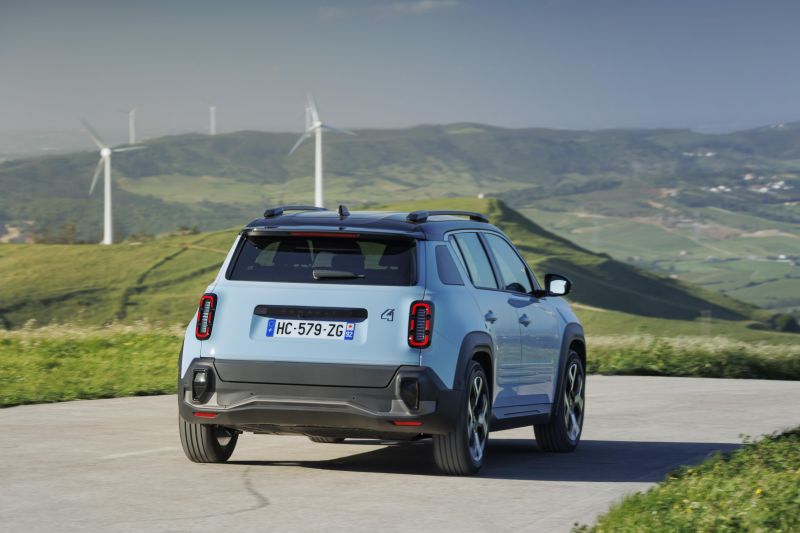
The stiff springs mean that big, transverse ridges send a hefty ‘whump’ up into the cabin, but the rest of the time the ride is quite well judged.
The steering is quick enough that you have to recalibrate your own inputs a little at first, but you soon get used to it, just rolling your wrists a little to point the R4 through most corners.
Visibility is only OK, though, which isn’t great in town. The roof is quite low set, which means taller drivers must duck a bit to see all around them.
Still, that makes for a good excuse to pick the option of the ‘Plein Sud’ full-length canvas sunroof, really…
What do you get?
Given that the Renault 4 E-Tech isn’t confirmed for Australia, local specifications are unavailable. In Europe it gets the following as a base.
2025 Renault 4 E-Tech equipment highlights:
- 10-inch touchscreen
- Smartphone mirroring
- LED headlights and tail-lights
- 18-inch alloy wheels
- Digital instrument panel
- Heat pump
- Single-zone climate control
- Adaptive cruise control
Is the Renault 4 E-Tech safe?
The Renault 4 E-Tech has not yet been assessed by ANCAP or Euro NCAP, so we do not know precisely how safe it might be. The Renault 5 E-Tech has been tested by Euro NCAP, and came away with a four-star score, notably a low score for Renault which was the first company to ever get a full five-star score from the safety organisation.
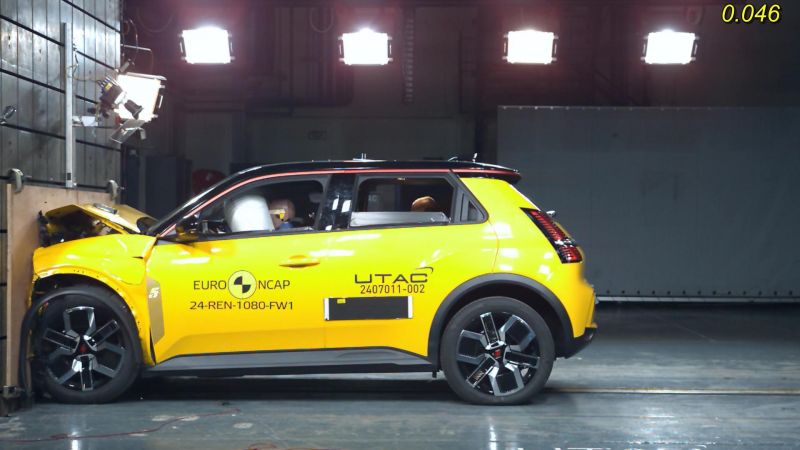
The Renault 5 was marked down for poor speed assistance, and occupant status monitoring. It remains to be seen whether Renault can improve those items before the R4 is tested.
Standard safety equipment includes:
- Forward collision warning and automatic emergency braking
- Speed limit warning
- Lane centring
- Traffic-sign recognition
- Rear park assist
- Driver attention warning
- Adaptive cruise control with stop-and-go
- Safety score and safety coach
How much does the Renault 4 E-Tech cost to run?
Assuming you’re on a good 16c-per-kWh electricity rate at home, you could fully charge the R4 E-Tech for as little as $8.32. Try seeing how far you get on $8.32 worth of petrol…
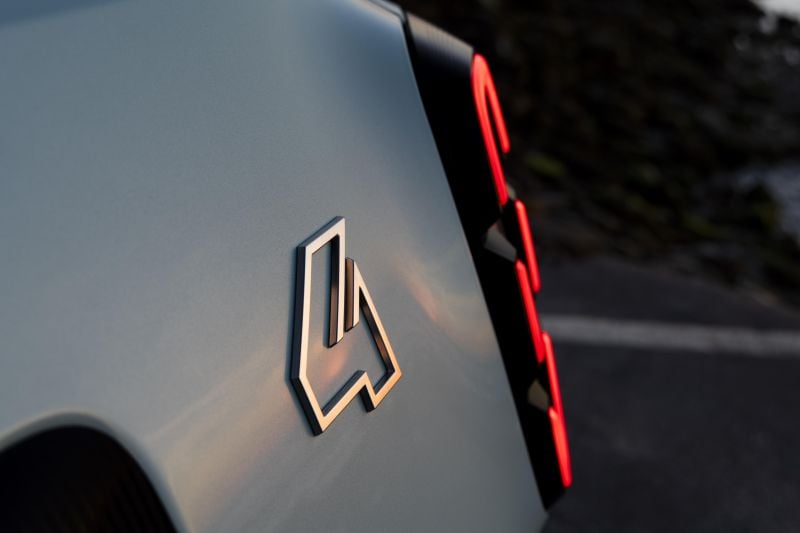
Renault Australia’s standard warranty is an impressive one – five years, with unlimited mileage for most models. There’s also an eight-year/160,000km warranty for the battery, and five years’ roadside assistance.
The only question mark is over servicing plans. Theoretically an electric car should be cheaper to service, but so far there’s no specific service plan for Renault’s only EV in Australia, the Megane E-Tech.
CarExpert’s Take on the Renault 4 E-Tech
The Renault 4 E-Tech is less immediately loveable than the Renault 5 E-Tech. Then again, that is true of most cars, but the R4 is more of a slow-burn kind of car.
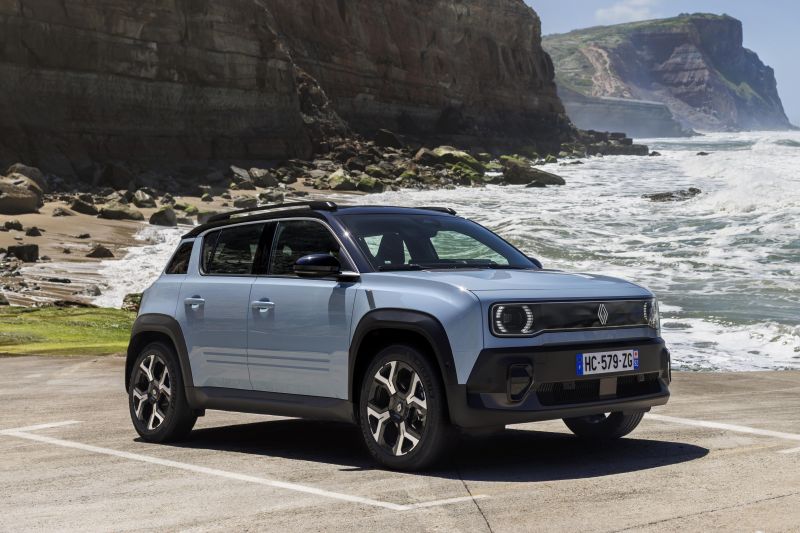
You start to spot more and more delightful design details the more time you spend with it, and even if the R4 isn’t quite as sparkling to drive as the R5, it’s still way ahead of many rivals in terms of how rewarding it is behind the wheel.
It may not ever hit the giddy heights of eight million sales, but this is another electric Renault that is well-deserving of your attention.
Click the images for the full gallery
MORE: Everything Renault


